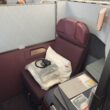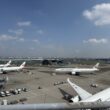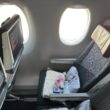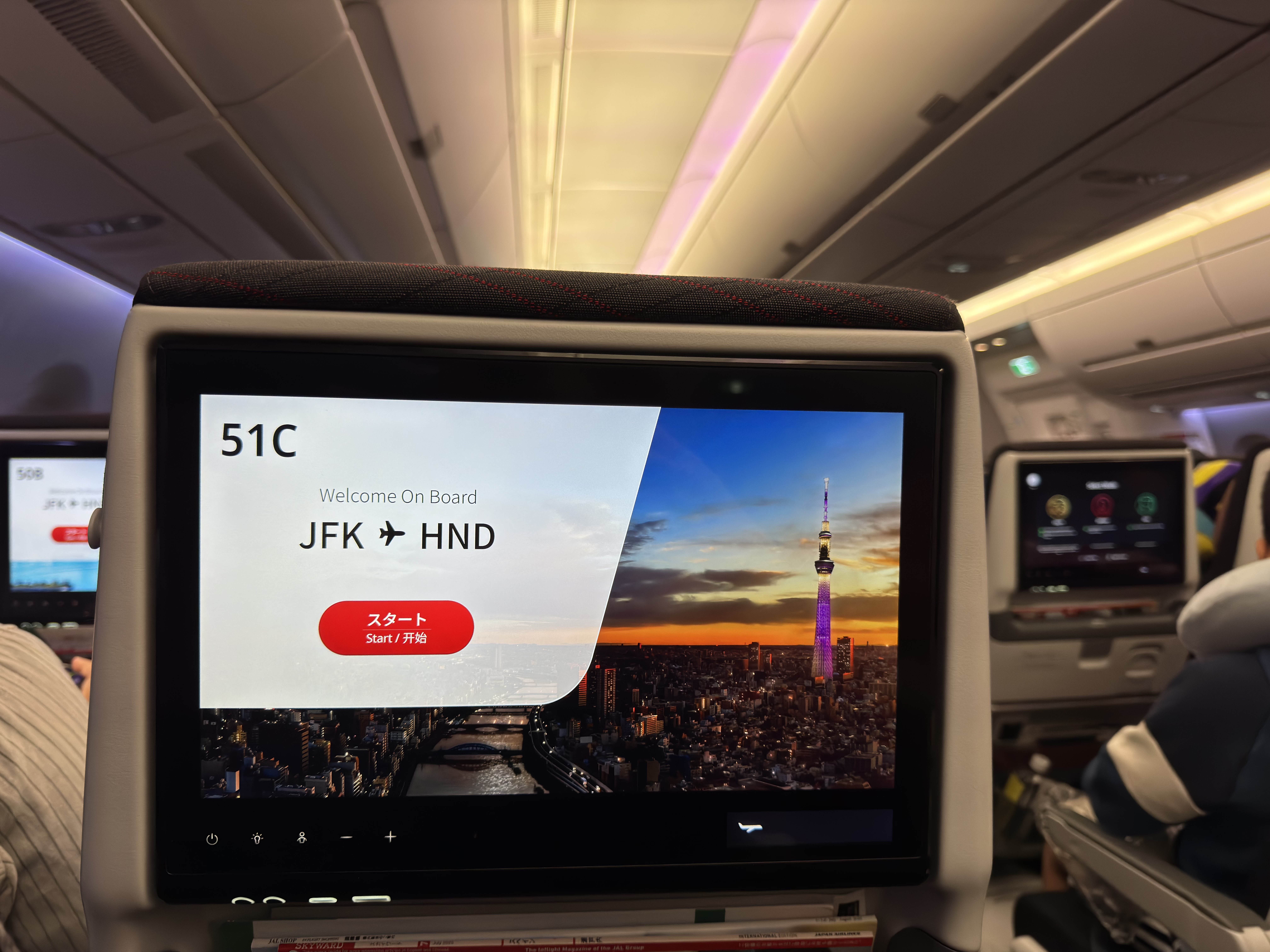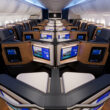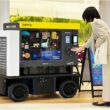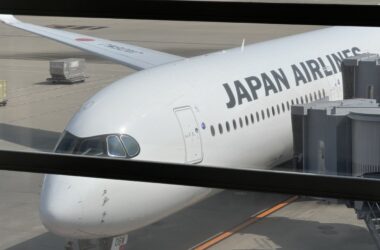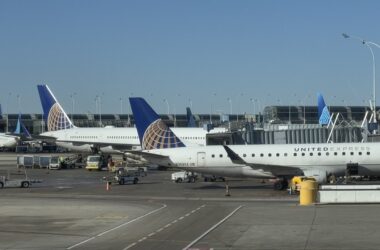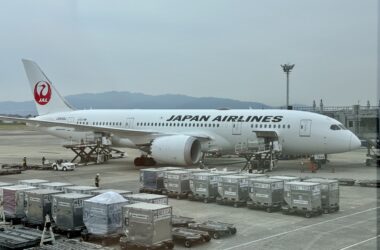I’ve flown Japan Airlines between Tokyo and the US many times over the years. Although I do enjoy flying business and premium economy class every once in a while, the reality is that economy class makes up the bulk of these trips. The airline, in my opinion, has a fantastic hard product in economy, whether it’s the Boeing 777 or the 787, or the new A350-1000. The service is good too, and I’ve always had great experiences overall.
There is, however, one thing that comes to mind that I really dislike. On these transpacific overnight flights, Japan Airlines loves to keep its cabin lights on.
Before I get into any of this, I’ll note that this is mostly based on my experiences frequenting the New York to Tokyo route. I can’t necessarily speak for the US West Coast flights or the Europe flights.
To start off, the flight I’m mostly referring to is Japan Airlines flight JL3, with the following schedule:
- New York (JFK) to Tokyo Haneda (HND): 1:40 (am) departure, 4:40 (am) arrival
It’s a 13 hour overnight flight. I enjoy this one because I can sleep well, I’m able to depart New York without wasting a day on travel, and arrive in Japan with a full day ahead of me.
For someone who has always had a hard time sleeping on airplanes (even in premium cabins), overnight flights help me a lot. But I wish the cabin lighting could be managed better in these two parts of flight JL3. Here’s an example from my flight earlier this week:
2am Takeoff? Time for a Meal

After departing New York at around 2 in the morning, the cabin lights stayed on as we got ready for a meal. JAL dubs this as a “late-night snack,” but it still takes some time for the meal to come around. My flight earlier this week had this meal served a full hour after takeoff. To be quite honest, I’d rather be asleep with the cabin lights off when it’s 3am back in New York.
Japan Airlines doesn’t serve a meal after takeoff for its Tokyo to London flight JL41, which has a midnight departure, and keeps the lights off after takeoff to let passengers sleep right away. I wonder why JL3 is different. The lights ended up shutting off almost another hour after this meal was served to me, as other passengers towards the back had to get served, and everyone had to finish eating. I was finally able to get rest 2 hours after takeoff, or at around 4am New York time.
That said, I do like the pasta they have been serving lately for the late-night snack (above photo). I had the exact same meal served back in March on this same flight, and I was looking forward to it this time around, knowing that it was going to be served.
Lights Remained On for the Last 5 Hours
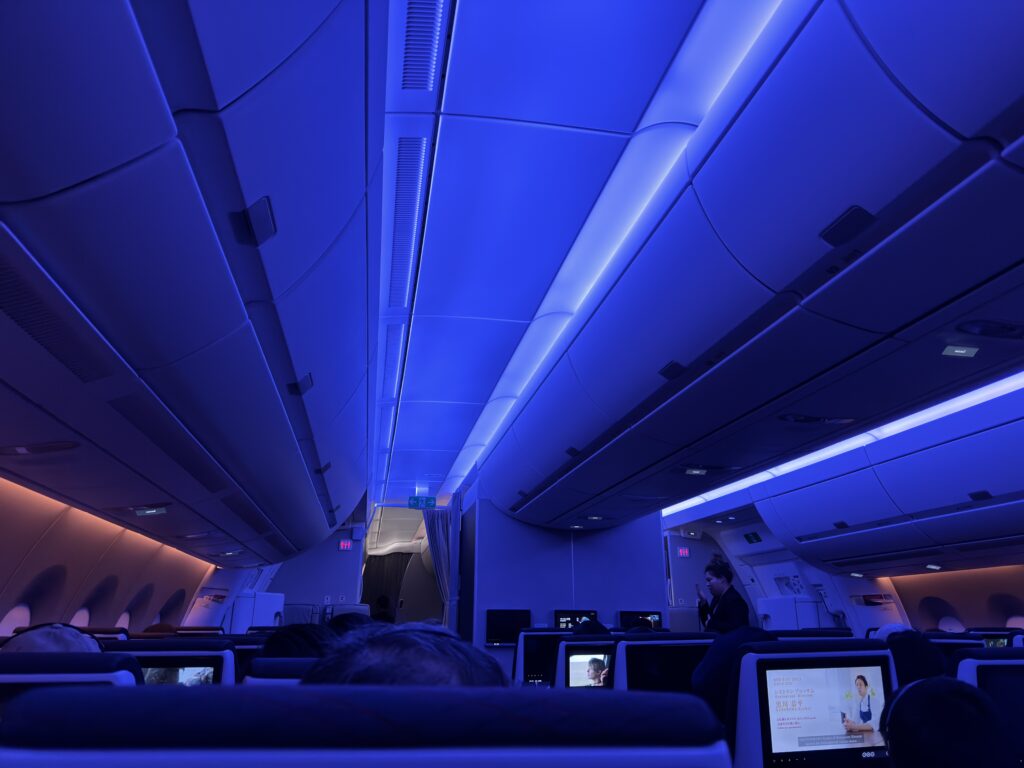
After getting some solid sleep, the lights turned on with a little over 5 hours to go. This is when they serve the full meal, which is totally understandable given the flight time. I have no complaint about the meal time itself; it’s more about what happens after the meal.
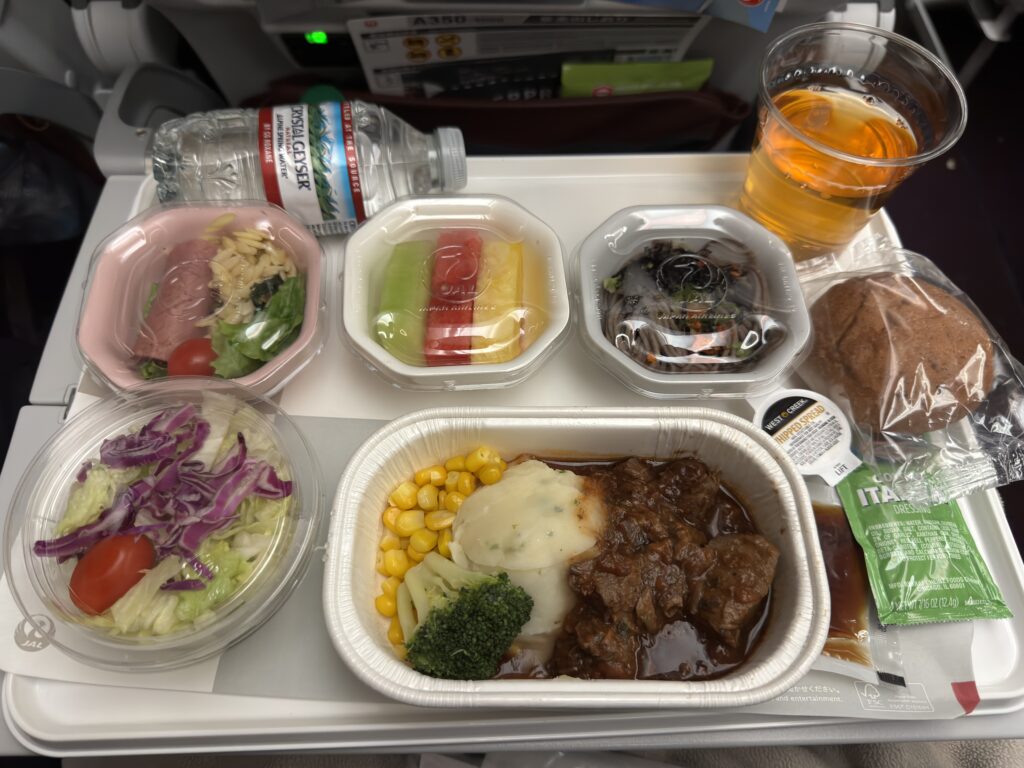
I went with the Irish beef with mashed potatoes on this flight, which turned out really good. Oddly enough, I often enjoy the catering out of New York better than the ones out of Tokyo when flying economy.
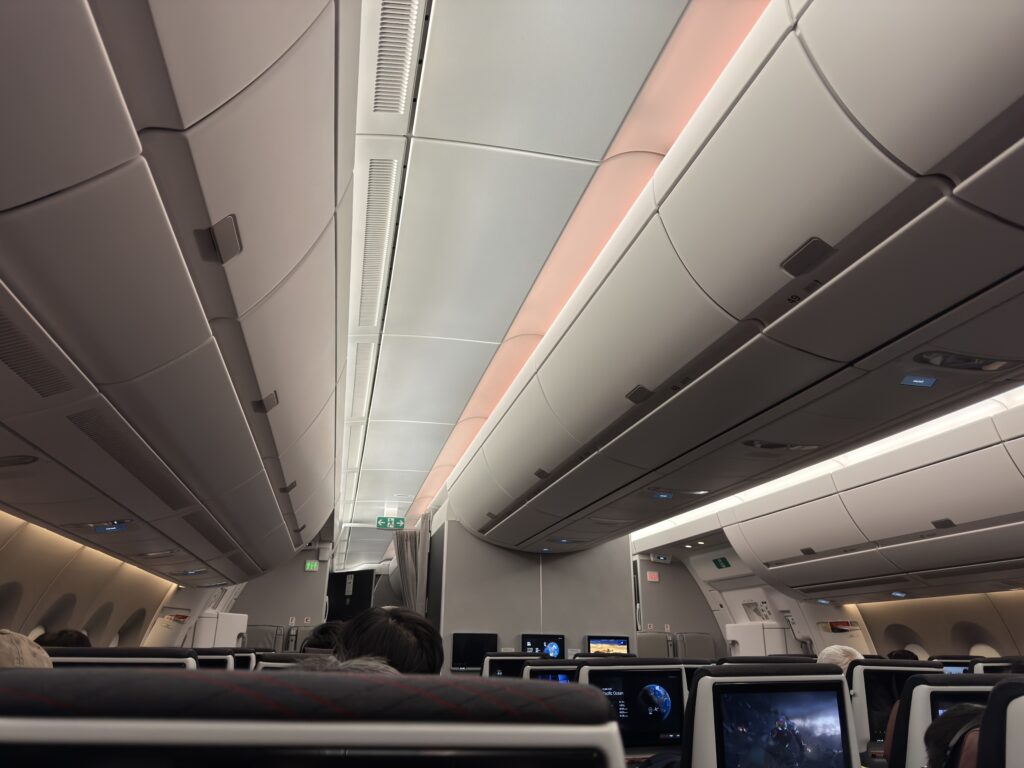
However, the lights never turned off after the meal. The lights remained fully on; no dimming whatsoever for the rest of the flight. Yes, these lights came on 5 hours before landing and stayed on for the rest of the flight.
This was a 13 hour flight. The cabin lights were on for 2 hours after takeoff and 5 hours before landing, adding up to 7 hours during this overnight flight. That’s more than half of the flight with the cabin lights fully on. For obvious reasons, I’d like some darkness on this long, overnight flight in order to get some sleep.
Some airlines adjust the cabin lights on or off in order to help passengers deal with jet lag. I had thought about that for this flight, but it didn’t make sense either, as it was between 23:30 and 4:30 in the morning in Japan when the lights were on for the final 5 hours of the flight.
(If anybody has any idea as to why the lights would be on for this long on this flight, let me know!)
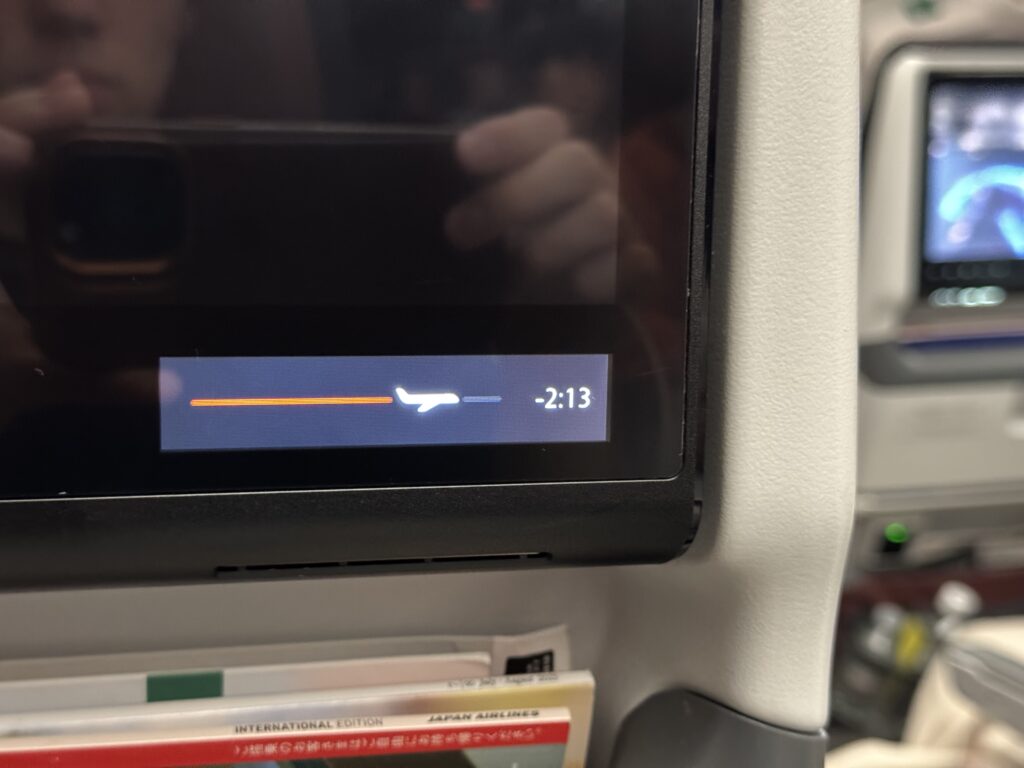
I’ll note that not every flight is like this; I’ve had ones where the lights actually turn off, or at least get dimmed after the second meal. But more often than not, this is the case.
I’ve also had similar, odd experiences with cabin lights on flight JL4 back to New York, albeit on a much minor scale than my experience on my JL3 flight earlier this week.
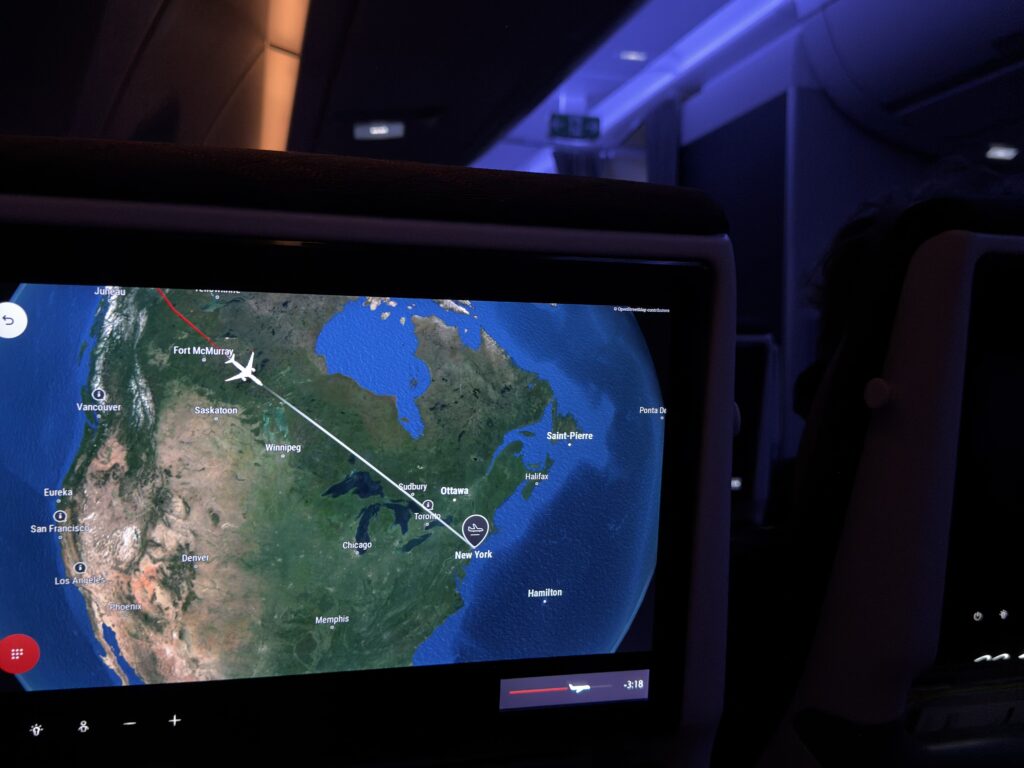
I most recently flew flight JL4 to New York back in March. This flight leaves Tokyo at around 19:45 and arrives in New York at around the same time. On this flight, the cabin lights turned on with about 3 hours and 15 minutes to go (the above photo was when the lights were beginning to turn on).
After the meal service was complete with a little over 2 hours remaining, the lights just remained on for the rest of the flight with nothing much else to do.
I mostly feel like I prefer the US airlines’ style of “Make meal service quick and let pax sleep as much as possible” approach instead of beginning the prearrival meal so early.
Bottom Line
I totally understand how difficult long-haul flights are to operate from an airline’s perspective. All passengers have different needs, and catering to everyone’s in a small metal tube is quite the challenge. That said, I have to wonder what the limitations are regarding the dimming of the cabin when there’s no service being conducted, on an overnight flight with plenty of flight time to go.
What do you guys think? Let me know if you have any input; I’m not the long-haul operator expert here. 😅
All photos taken by the author.

